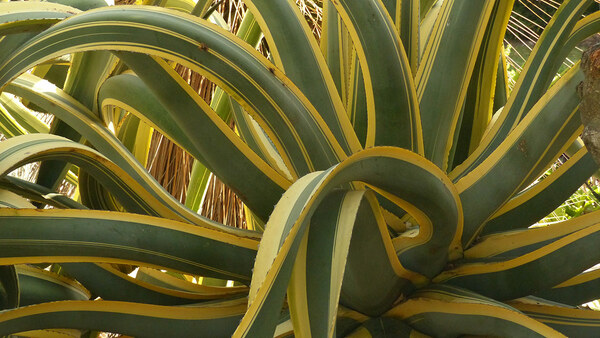
Among the diverse combinations, several adaptable players help to knit the different parts of the garden together, thriving in a variety of microclimates and design aesthetics.
|
|
1. ‘Bottle Rocket’ bearded iris

Name: Iris ‘Bottle Rocket’
Zones: 5–10
Size: 30 to 35 inches tall and 12 to 24 inches wide
Conditions: Full sun; average, well-drained soil
Native range: Hybrid
Bearded irises are difficult to compete with in spring, and there are thousands of named cultivars to fall in love with. I grow about 60 different ones, but ‘Bottle Rocket’ always gets my attention with its warm colors that glow among more standard lavender or purple shades. It looks great against the terra-cotta color of my house.
2. Hens and chicks

Name: Sempervivum tectorum and cvs.
Zones: 3–9
Size: 2 to 4 inches tall and 6 to 12 inches wide
Conditions: Full sun to partial shade; average to gritty, well-drained soil
Native range: Southern Europe
Hens and chicks are a mainstay in cold-climate rock gardens. A mix of species and cultivars creates a colorful mosaic reminiscent of the great succulent gardens found in milder coastal gardens. Tough as nails, they thrive on neglect, and the “chicks” can expand to form a tight ground cover over time.
3. ‘Pink Chintz’ thyme

Name: Thymus serpyllum ‘Pink Chintz’
Zones: 5–9
Size: 1 to 3 inches tall and 24 inches wide
Conditions: Full sun; medium to dry, well-drained soil
Native range: Europe, western Asia, North Africa
This tight-growing ground cover will fill the smallest of gaps or create an expansive carpet with its trailing stems and tiny leaves. Pink-purple flowers are welcomed by honeybees in mid-spring and sporadically thereafter. The fine texture and spreading nature of thyme unify path and bed edges as it creeps between boulders and cascades down sunny slopes. It’s the perfect backdrop for bolder plants and hardscape features.
4. Granita® Raspberry ice plant

Name: Delosperma ‘PJS01S’
Zones: 5–10
Size: 4 inches tall and 30 inches wide
Conditions: Full sun; average to gritty, well-drained soil
Native range: Hybrid
The consistent form of different ice plants’ foliage and flowers allows many cultivars to blend easily in a garden, and I mix them freely; this cultivar, however, is a favorite. Its creeping habit paints crevices and slopes in a unique warm carmine and red-purple. A glorious spring display of these flowers is followed by scattered repeat blooms all summer long.
5. Large penstemon

Name: Penstemon grandiflorus
Zones: 3–9
Size: 2 to 4 feet tall and 1 to 1½ feet wide
Conditions: Full sun; medium to dry, well-drained soil
Native range: Central United States
This species has flowers that can be white, pink, or purple, though I’ve selected only for lavender blooms in my garden. Flowering spikes grow quickly in spring and blossom up to early summer. The sturdy stems produce robust seedpods that persist for winter interest, allowing this perennial to self-sow abundantly throughout the garden.
6. Beaked yucca

Name: Yucca rostrata
Zones: 5–10
Size: 10 to 15 feet tall and 3 to 10 feet wide
Conditions: Full sun to partial shade; medium to dry, well-drained soil
Native range: Southwest Texas, northeast Mexico
Many hardy yucca species are scattered throughout my property, and this bold but elegant yucca is the queen of them all. The blue-green leaves are narrow and flexible with the finest of gold edges, and they nearly shimmer on windy days. Flower stalks extend 3 feet above the leaves and are thickly laden with creamy, bell-shaped blooms that emit a clean, light fragrance in spring.
Dan Johnson gardens in Arizona and Colorado. He is associate director and curator of native plant collection at Denver Botanic Gardens and is the Southwest regional reporter and forum moderator for FineGardening.com.



















Comments
Log in or create an account to post a comment.
Sign up Log in